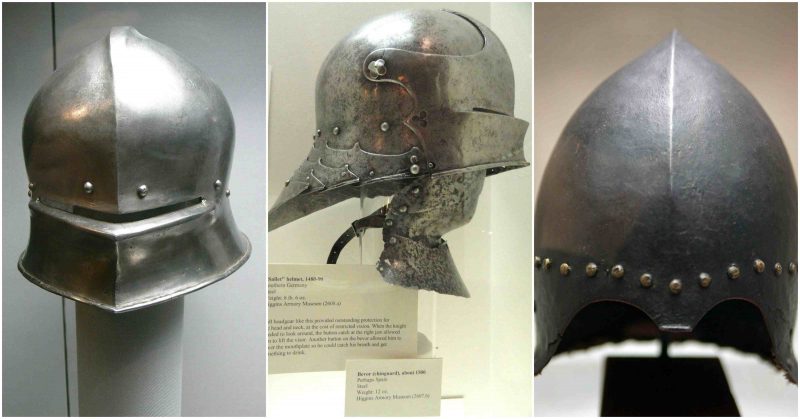The sallet was a war helmet that replaced the bascinet in Italy, western and northern Europe and Hungary during the mid-15th century. In Italy, France and England the armet helmet was also popular, but in Germany the sallet became almost universal.
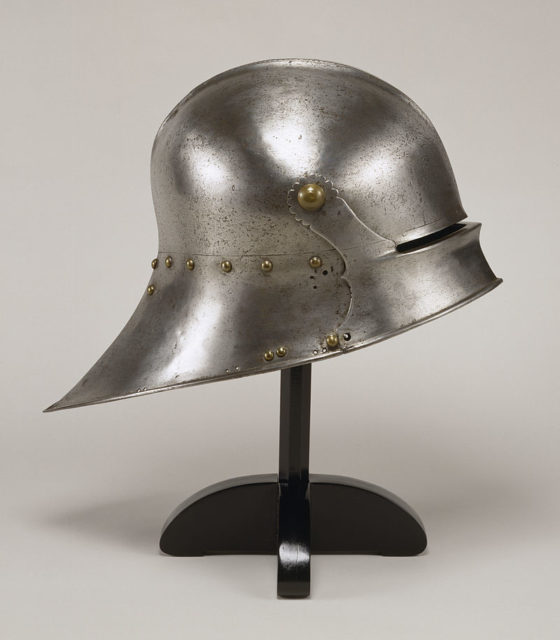
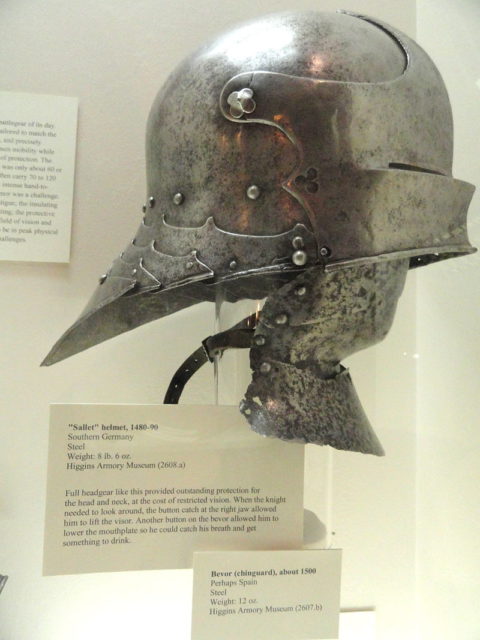
The origin of the sallet seems to have been in Italy where the term celata is first recorded in an inventory of the arms and armour of the Gonzaga family dated to 1407. In essence the earliest sallets were a variant of the bascinet, intended to be worn without an aventail or visor.
To increase protection to the face and neck, that the abandonment of the visor and aventail would have exposed, the sides of the helmet were drawn forward at the bottom to cover the cheeks and chin and the rear was curved out into a flange to protect the neck. The barbute or barbuta was a related helmet appearing in Italy at much the same time as the sallet. Unlike the sallet, the fully developed barbute consciously copied elements of the Classical Corinthian helmets of ancient times.
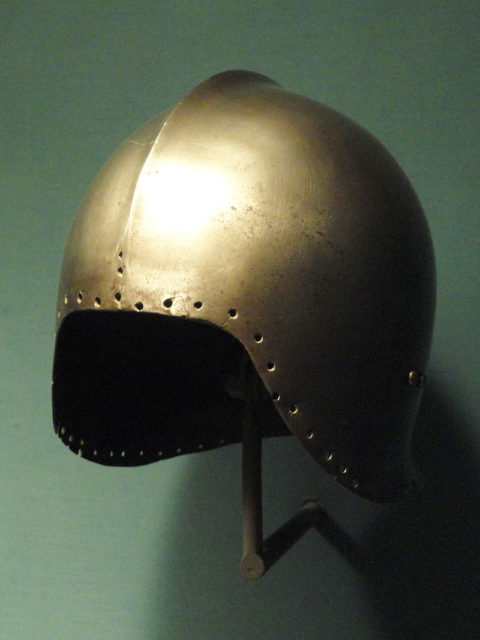
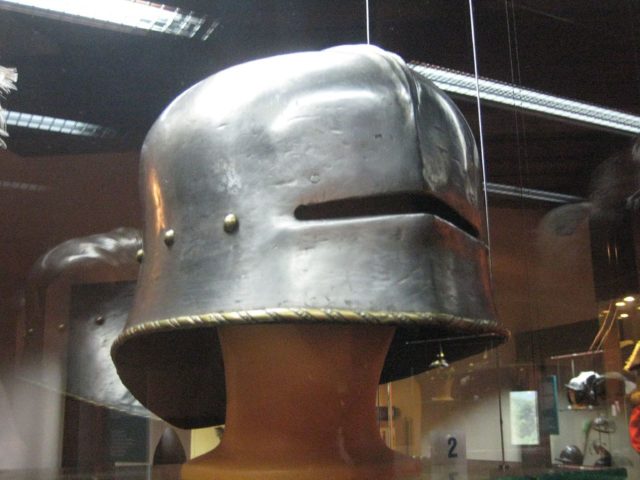
The sallet became popular in France, England and the Netherlands through contact with Italy and eventually was adopted in Germany. Regional styles developed, which were catered for by the great armor manufacturing centers of northern Italy (especially Milan) and southern Germany (Augsburg and Nuremberg). However, though a sallet, or complete armor, might be German in style it could have been of Italian manufacture, or vice versa. The German sallet may have been the product of the melding of influences from the Italian sallet and the deep-skulled “German war-hat,” a type of brimmed chapel de fer helmet.
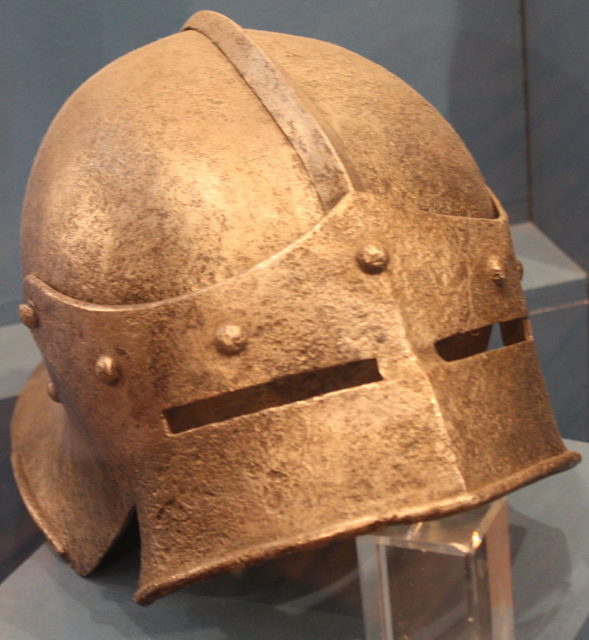
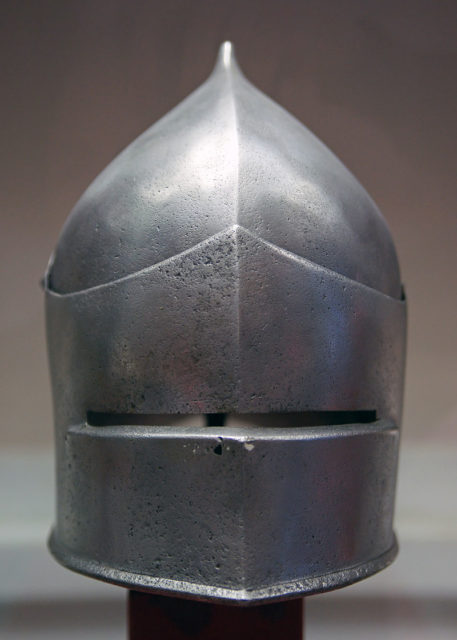
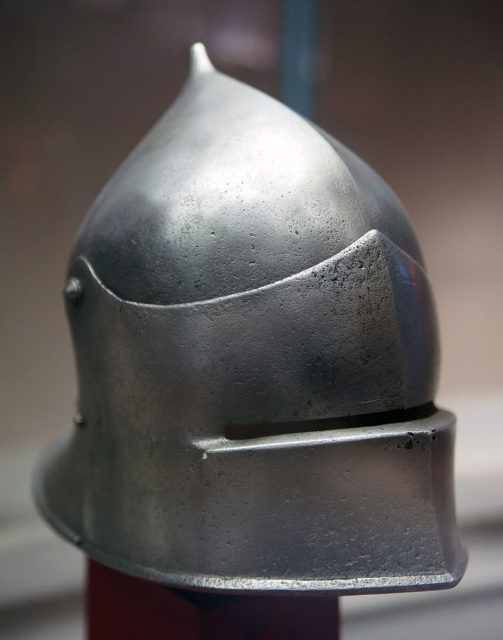
Later Italian sallets (by c. 1460) lost their integral face protection and became open-faced helmets with gracefully curved surfaces. In this simple state they were favored by more lightly armed troops, especially archers and crossbowmen, whose uninterrupted vision was at a premium.
For more heavily armored troops a greater level of protection could be afforded by the attachment of a plate reinforce for the brow of the helmet and a deep visor, usually of the ‘bellows’ form which incorporated many ventilation slits. Such helmets would have been worn with a stiffened mail collar, termed a “standard,” which protected the throat and neck. Some Italian-style sallets were provided with a covering of rich cloth, usually velvet, which was edged in silver-gilt or gilded brass; ornamental decoration in the same metals could be added to the surface of the helmet, allowing areas of cloth to show through.
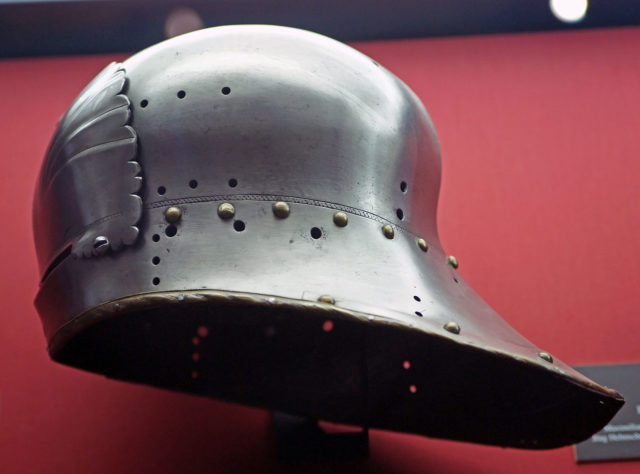
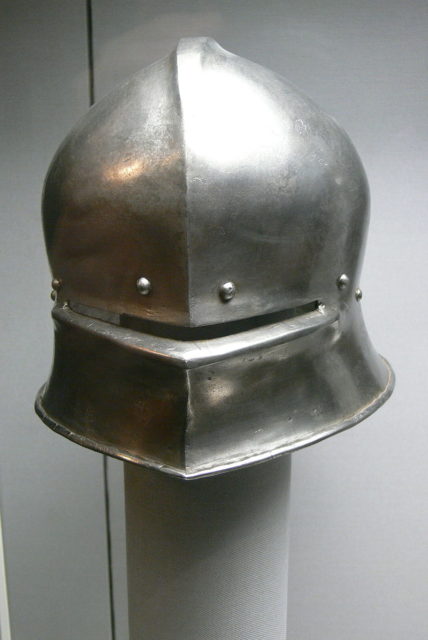
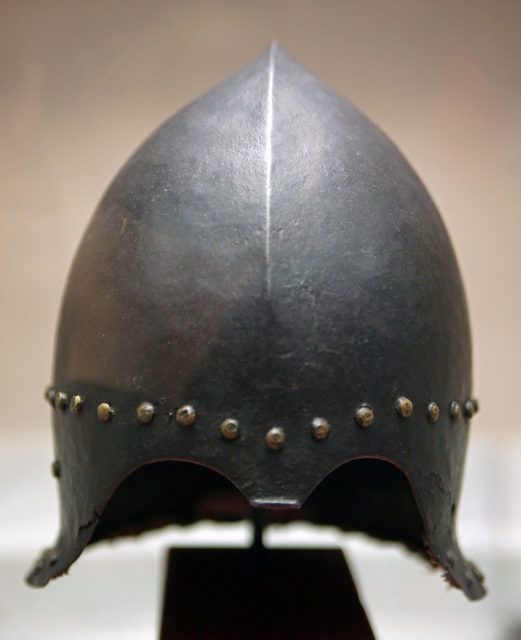
In the period 1450-1460 a distinctive German style of sallet appeared. It was round-skulled but was less curvaceous than the Italian sallet, its most obvious feature was that the rear of the helmet was drawn out into a long tail, sometimes consisting of a number of lames. One characteristic that distinguishes early German sallets from later German sallets up to c.1495, is the length of the helmet tail, which became more pronounced over time.
The front of these helmets sometimes extended down to cover the upper-face, with eye-slits provided for vision. Other versions retained the same outline, but the upper-face was protected by a movable half-visor. Most German sallets were worn with a separate scoop-shaped plate gorget, called a bevor, that extended from the upper chest to just below the nose and protected the wearer’s lower-face and throat. Most needed no added ventilation holes, as there was a natural gap where the visor or front of the helmet overlapped the bevor near the wearer’s mouth.
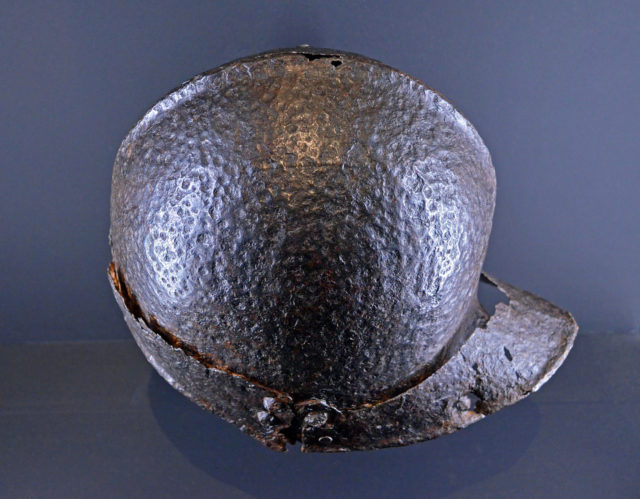
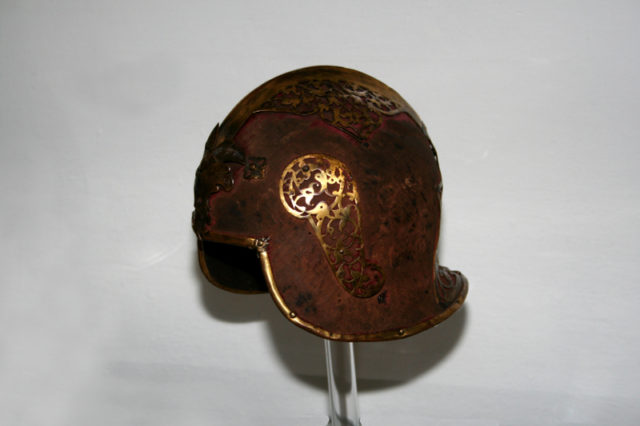
By the mid 15th century a regional variety of sallet had evolved in England and the Netherlands, termed the ‘English-Burgundian style’ (the Netherlands were at that time ruled by the Duke of Burgundy). It was usually worn with a bevor and had very similar facial protection to, and frontal appearance as, the German sallet, but was more curvaceous and possessed a less extreme projection to the rear. In many ways it was intermediate between the German and Italian forms. French sallets were very similar to the English-Burgundian type and all have been classed as “short-tailed sallets.”
